by Steve Watson
8 minute read
The literate and waste conscious Isonomia reader will no doubt be familiar with just how very differently waste gets talked about in different quarters. At one extreme there is a growing community of ecologically minded individuals committed to seeing all waste as a ‘resource’, with the very admittance of the category of ‘waste’ seen as part of the environmental problem. At the other, the Daily Mail tends to class recycling as just another type of ‘rubbish’. The vocabulary different people use to categorise the same basic stuff has a dramatic effect on how they view it, and to understand how this has come about we need to delve deep into the linguistic landfill on which modern English is built.
And the word was ‘waste’
In the beginning there was a vast, desolate nothingness; well, there was the Latin ‘vastum’ meaning ‘desolate regions’. By the thirteenth century, this had evolved into the English word ‘waste’, while retaining something close to its earlier meaning. In the fourteenth century it took on the noun sense of ‘useless expenditure’ and subsequently the verb sense ‘to consume needlessly’. ‘‘Waste’ only acquired the meaning of ‘a rejected thing’ in the fifteenth century, around the same time that ‘refuse’ also appeared with this sense. Six centuries later, this same meaning is the one enshrined in the Waste Framework Directive.
Is this etymology lesson of purely academic interest or might there be implications for waste management? Well, since waste as we know it today – in both composition and volume – is a thoroughly modern phenomenon, it does seem strange to be talking about this relatively new stuff using words that are unchanged since the late Middle Ages. Because the words we use shape our attitudes and behaviour, if we are interested in progressive waste management we should be asking whether certain aspects of our terminology are a few hundred years out of date.
Pre-historic waste management
Just because our words for waste appeared in medieval times, we should not assume that they named a new phenomenon. Evolutionary biologist Valerie Curtis argues that the category of ‘a rejected thing’ may be as old as humanity itself. Curtis provides an evolutionary account of the origins of our common, visceral disgust of dirt in a narrative in which hygienic behaviour emerges as the result of the favoured survival of animals with tendencies to avoid possible causes of illness. Hygienic behaviour is not only common to humans but found across the animal kingdom. The fundamental impulse to reject certain things as ‘dirty’ clearly predates culture and therefore precedes any semantically charged attitudes towards those objects.
Although for Curtis the impulse to avoid dirt has been an unvarying component of human nature since pre-history, she does allow that subsequent cultural developments are capable of mediating our innate tendencies, so that our language and social customs constitute a kind of second nature which also affects how we feel about objects.
Dirty Words
As an evolutionary biologist, Curtis is concerned with the fundamentals of a shared human nature, and she in fact sets her theory in opposition to that of social anthropologist Mary Douglas, who presents a culturally relativistic account of human attitudes to dirt. Whereas Curtis’ theory allows us to define ‘dirt’ as ‘that which is rejected through biologically determined impulses’, Douglas contends that what we class as dirt is ‘that which has been rejected as inappropriate’ within a culturally specific system.
For Douglas, the threatening aspect of refuse is not its potential to cause biological harm. Rather, its ambiguity challenges the neat ordering of our social world. For example, once food has been removed from its wrapping, the wrapping is no longer a functional component of our world in the way it once was, but its “half identity still clings” to it so that it becomes neither one thing nor another. By re-classifying it as ‘rubbish’, its identity is once more fixed and it is safely brought back into our conceptual scheme. As this classifying is dependent on our customs – and therefore our words – Douglas’ theory offers more room for variance and change in our attitudes towards refuse than if they had been fixed in Curtis’ pre-cultural past.
It is easy to see these two theories as sitting on opposing sides of some biological / social anthropological divide, but aren’t the concerns regarding identity Douglas highlights exactly the kinds of factors which might mediate our biologically determined impulses in the way that Curtis imagines?
Our language defines the objects we identify as ‘dirty’, and that therefore trigger our impulse to reject. But if this drive has been harnessed to a vocabulary that happens to categorise harmless elements alongside the harmful, it will lead us to feel revulsion for things that we have no reason to reject. Of course, we have some control over our hardwired revulsion instinct – as shown by the fact that people take on work such as unblocking sewers. But when it comes to recycling, perhaps the solution is not self control but recategorisation.
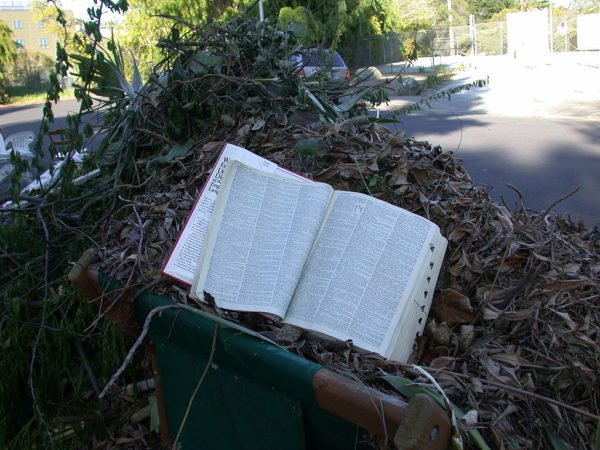
‘Trash’ comes from the Old Norse ‘tros’, meaning ‘fallen leaves and twigs’. Photo by Dvotygirl, via Wikimedia Commons.

‘Trash’ comes from the Old Norse ‘tros’, meaning ‘fallen leaves and twigs’. Photo by Dvotygirl, via Wikimedia Commons.
We find ourselves speaking about very different things – some potentially harmful, some not – using the same words. ‘Waste’ can refer to a puddle of human effluence, or an empty glass bottle; ‘resource’ can be applied to that same glass bottle, or a newly struck wellspring in a barren landscape. Our choice of language may affect whether our ‘rejection’ impulse is triggered, and could determine whether the bottle is something we want to get out of sight and out of mind, where is it safe and can do no harm; or whether we’re happy to handle and sort it for recycling.
For Douglas, any object can either be a useful, safe component of our social world endowed with positive cultural meaning, or it can be useless, possibly harmful and requiring rejection from the social world. In the latter case the only safe meaning it can hold is that of ‘rubbish’, ‘refuse’, ‘dirt’ or ‘waste’ – which it may not be able to retain if we examine it too closely:
“it is unpleasant to poke about in the refuse and try to recover anything, for this revives identity. So long as identity is absent, it does not create ambiguous perceptions since it clearly belongs in a defined place, a rubbish heap of one kind or another”.
It is striking how applicable this is to modern attitudes towards waste and recycling. Recyclate appears ideally ambiguous, existing in a limbo between what it once was and what it might become. In this light, one could construe the more violent objections to progressive waste management – the outrage at recycling containers multiplying in homes, the fears that food waste containers will bring hordes of vermin – as a misfiring of evolutionarily conditioned disgust impulses misdirected through an inappropriate conceptual ordering of matter.
Strong words
At the opposite conceptual pole, it is the concept of waste that is itself becoming ‘the rejected’. On the small scale, a minor Youtube hit by the permaculture activist band Permascience tells us that “there’s no such thing as waste, just stuff in the wrong place”; on a grander level, the European Commission’s Road Map to a Resource Efficient Europe announced as a milestone that by 2020 waste will be “managed as a resource”. Both of these are attempts to bring (some of) ‘the rejected’ back into the conceptual sphere of the ‘useful’, ‘safe’, and ‘socially appropriate’. However, if this thinking is common to fringe environmentalists and EU policy makers, it is still a rarity amongst the general public.
If we really want to change the way that waste is managed on a large scale, then we should be aiming for re-descriptions of what have previously been called waste materials that are both strong and intuitive enough to enter the public lexicon. If we could successfully re-describe waste, then we could give it a place within the order of our social lives such that people would no longer feel compelled to eject it from their homes or minds with undue alacrity.
What kinds of re-descriptions might these be? ‘Resource’ seems a bit too dry to capture the public imagination, and it is hard to imagine a conscientious householder saying: “Honey, have you put the resource out for collection?” ‘Recycling’ already has a pretty good track record, and high recycling rates in some countries and municipalities suggest that talking in terms of ‘paper recycling’, ‘metal recycling’ or ‘glass recycling’ can help to rehabilitate these rejected materials.
The environmental problems associated with global waste have arisen in the last half century precisely because people have inappropriately rejected materials which it would be much more prudent to make use of. These materials are not innately harmful and in some cases are in fact, ironically, more harmful when rejected. They do not require rejecting, and to call them waste is to make a fundamental error in categorisation.
Learning to think of waste in terms of resource may entail nothing more than learning to think of paper as paper, glass as glass, and metal as metal. The vocabulary we need for the materials we want to get better at recovering already exists, and changing the way we talk about them would be a good first step towards consigning ‘waste’ to the residual bin of language.


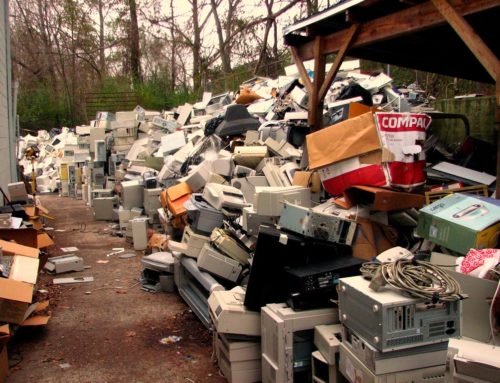

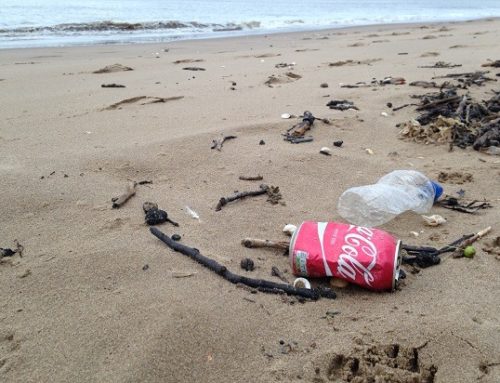
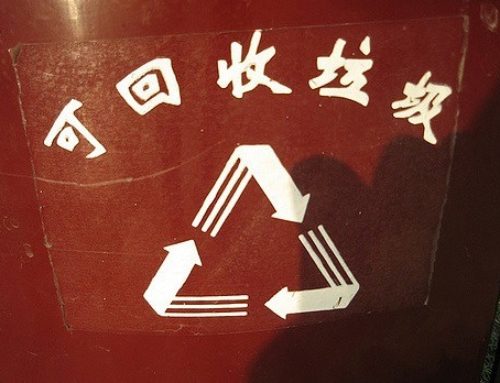
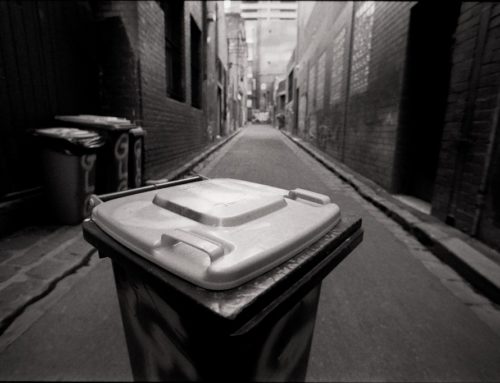
When I was in local authority I used Bronze Age midden research (from Runnymede I think) to compare and contrast waste composition then and now.
Bronze Age man’s use of plastics was creditably negligible but I seem to recall they ate more oysters than the residents of Cheshire which did come as a surprise ;).
Hi Paul, thanks for that insight! I’d be really interested in reading any reports of research along those lines. Are you at all able to point me, and the Isonomia readership, towards any notable publications?
Mike, I see that Steve’s article seems to have inspired you to say a little yourself about this topic .
I think we really underplay the importance of the language we use to divide the world up – the way it shapes our understanding tends to be invisible to us, because it is the lens through which we see. Yet many of us have lived through huge changes in perception that have accompanied social and political changes.
The current attempts to transform the language by which state benefits and the people who receive them are described is just the most recent, and profoundly interesting (if rather depressing) to see played out. “Benefit” and “claimant” are already, I feel, more pejorative terms than “social security” and “recipient” which were current twenty years ago. It is hard to discern the impact such changes have at the individual level, but at the societal they seem very powerful.
An interesting journey through the language and history of waste.
I believe that the concept is quite correct, however what you say and what you do need to match up!
If paper be paper, wherever it sits in it’s life cycle, then just maybe, it needs to be recovered separately at source. The same would apply to any other rejected material that seeks rehabilitation back into the language of use.
This is what the revised Waste Framework Directive appears to require, so in regulatory terms, the regulation is on the right track! The only minor fly in the ointment being, that everything that is discarded, is legally classified as waste for the purposes of implementing regulation.
So for me, I can see that people will still regard their recycling collection, as something other paper, metal etc. Where it is collected co-mingled and sorted away from the eyes of the producer. This loss of connection could be the critical factor in recognising both the value and responsibility in what we currently call waste.